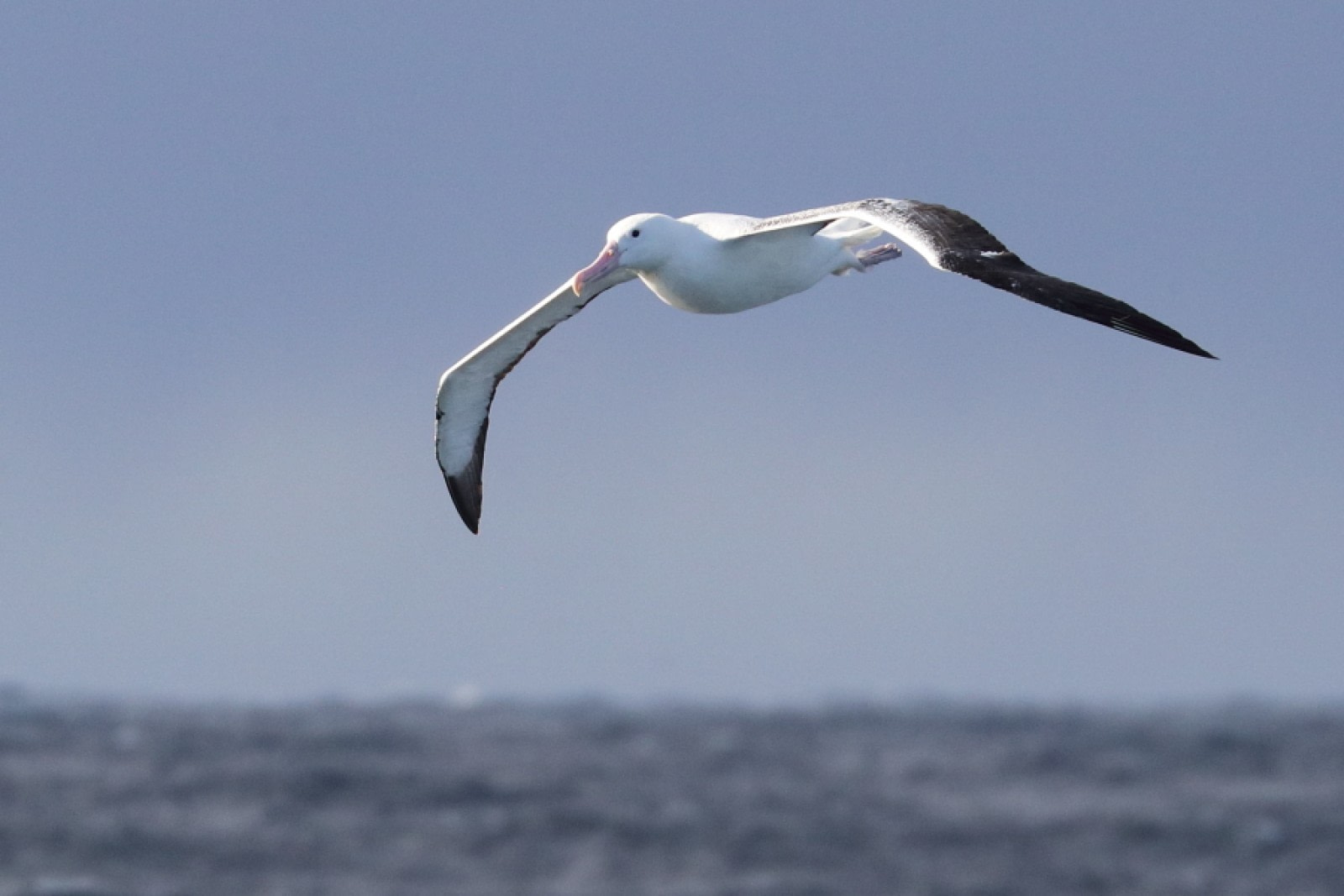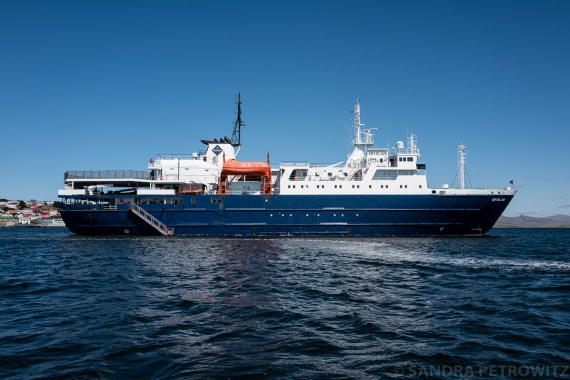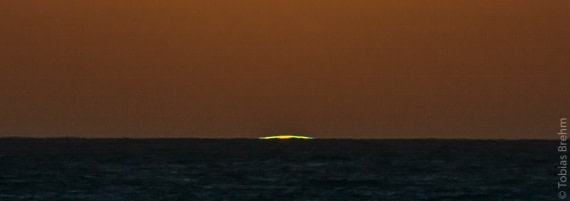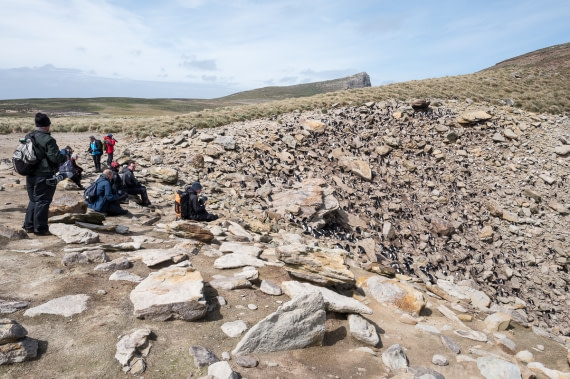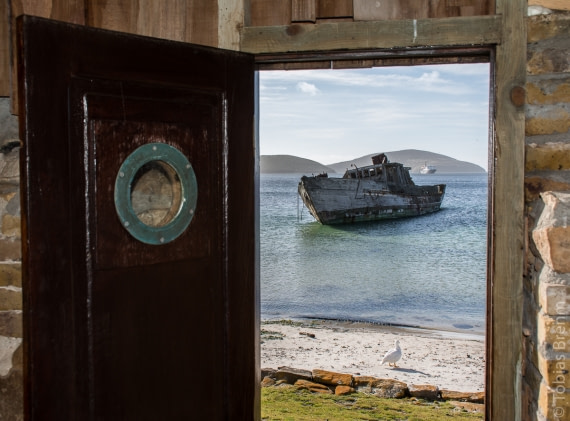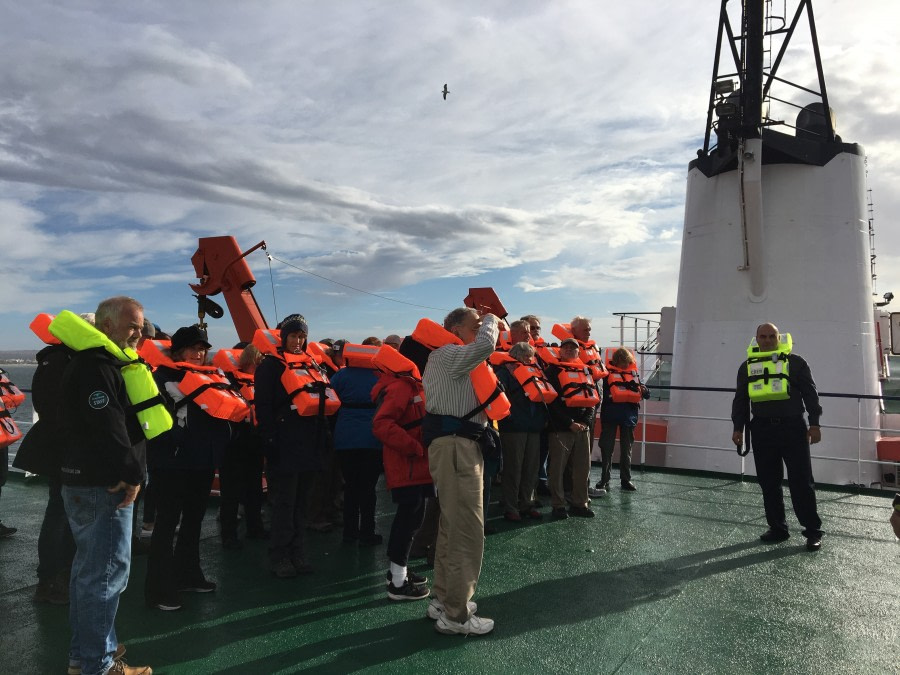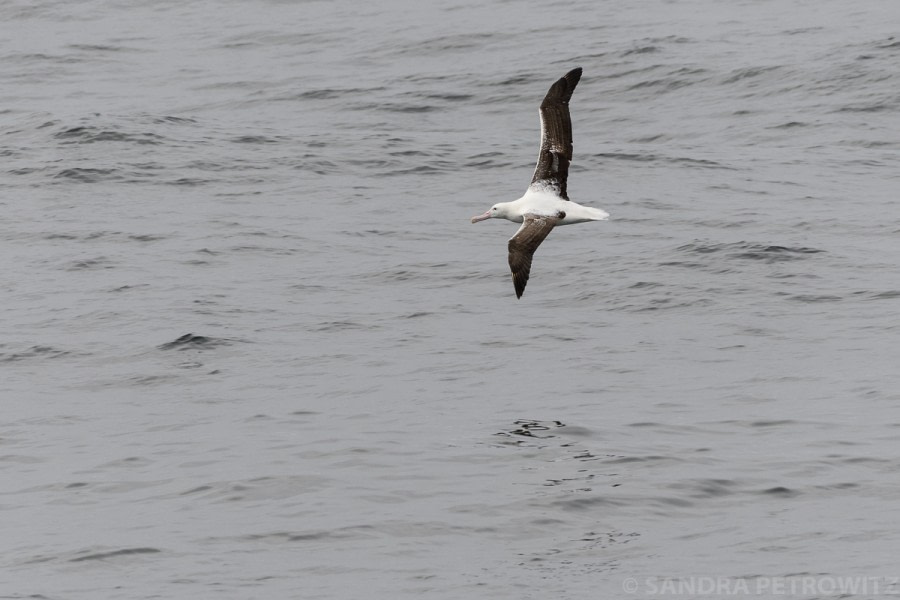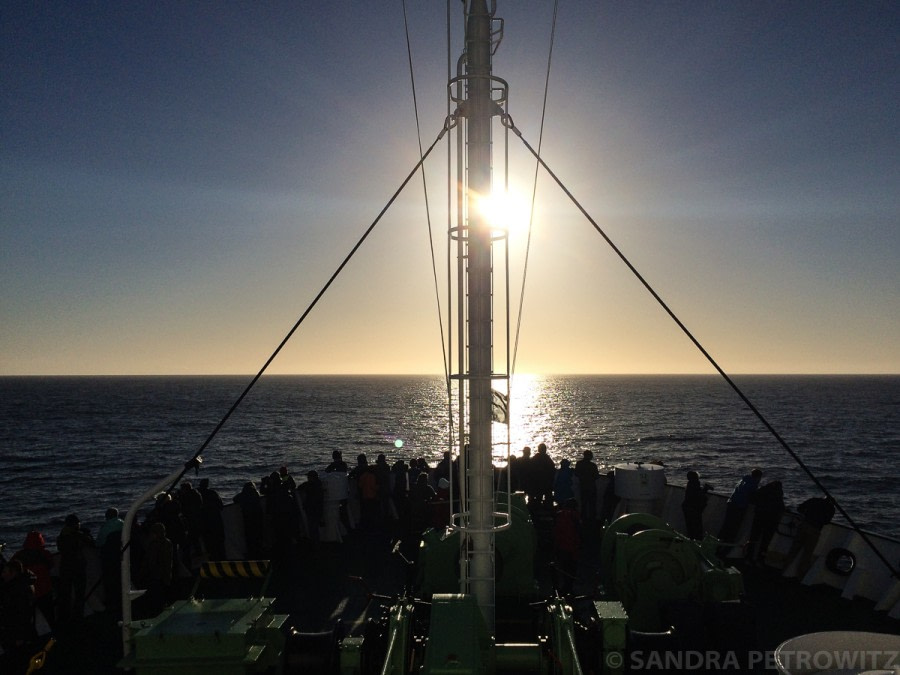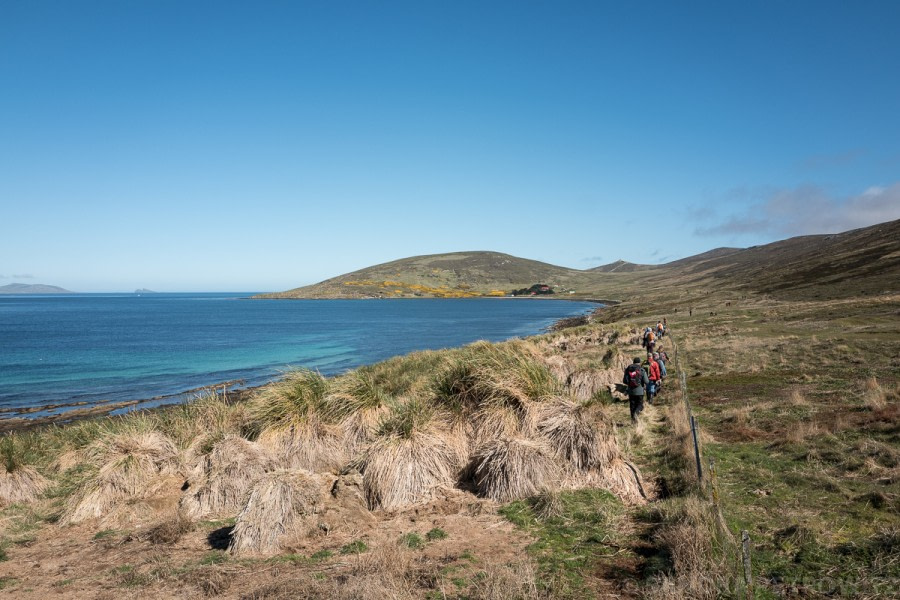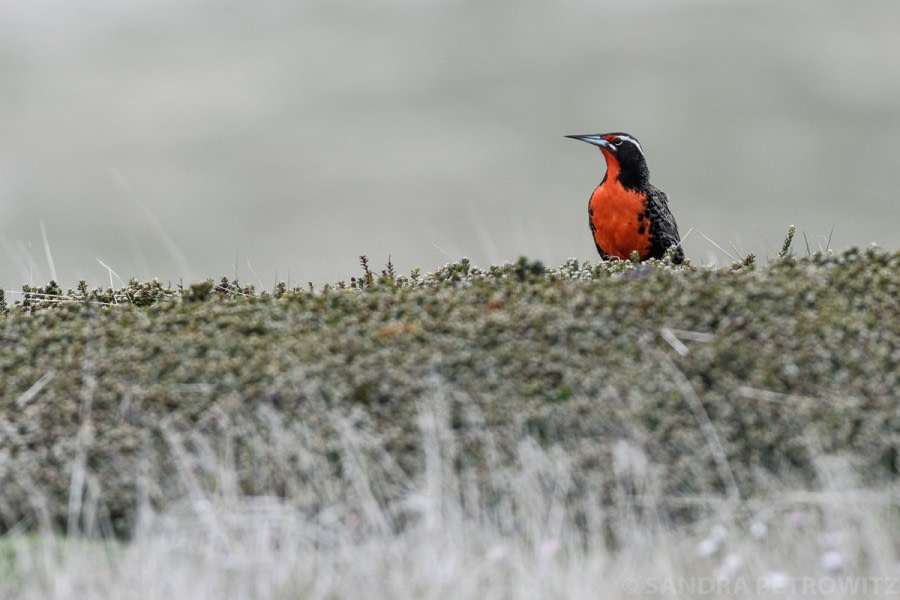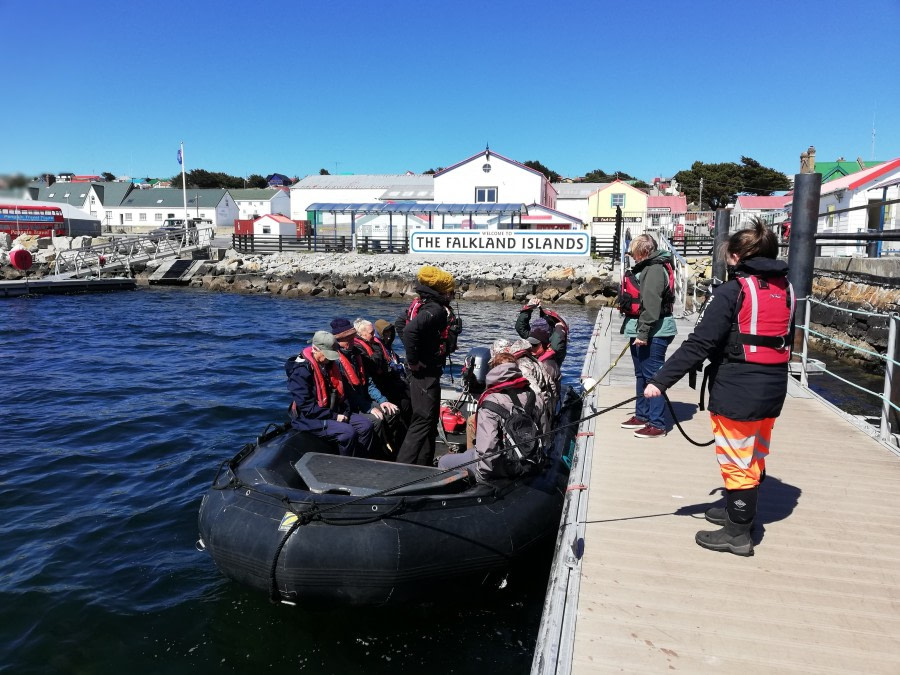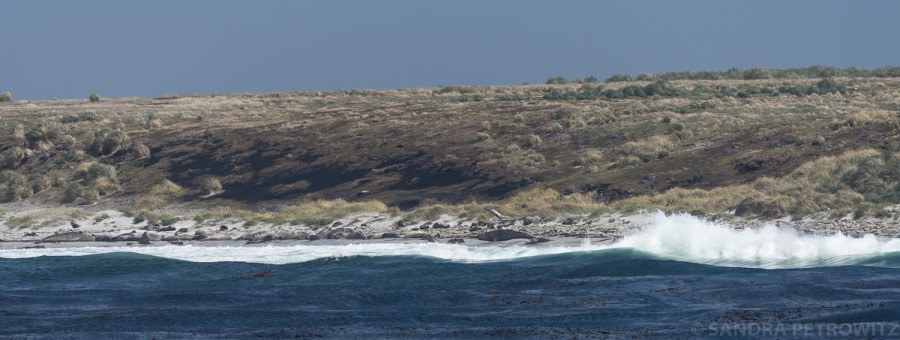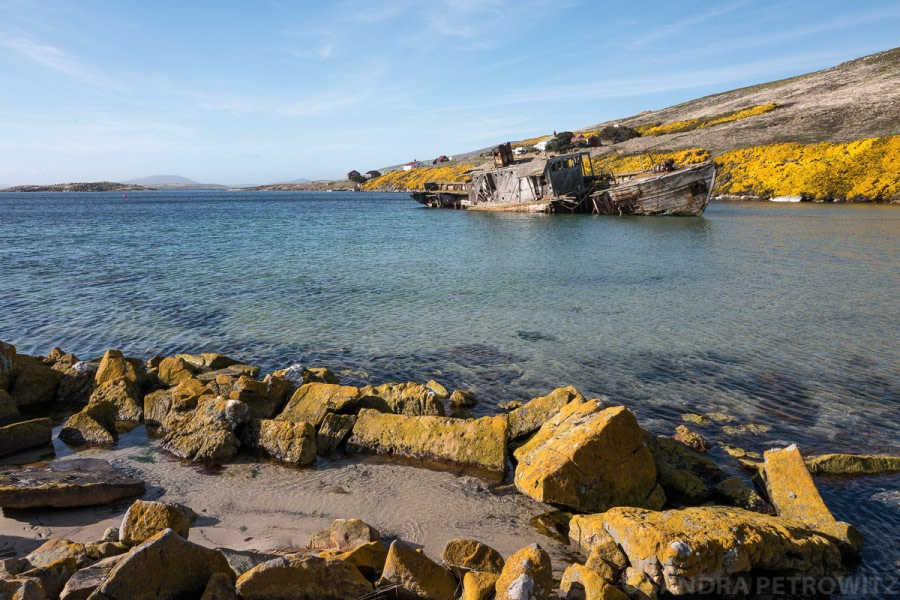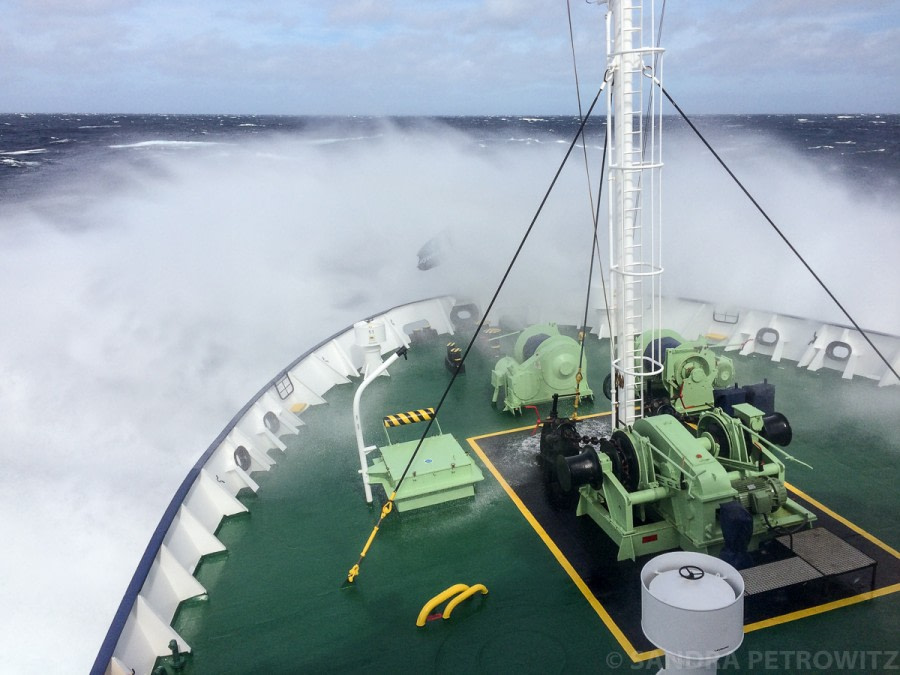| Fecha: | 29.10.2018 |
| Posición: | 42°45.7‘S, 065°01.5‘W |
| Viento: | S 5 |
| Clima: | partly cloudy |
| Temperatura del Aire: | +12 |
On a sunny, balmy day we made our way towards the pier in Puerto Madryn. Shuttle buses took us to where our home for the next ten days was waiting for us: Ortelius. After we had our luggage scanned at the mobile X-ray station on the pier, we took time to just bask in the sun, take in the views of the town or keep a lookout for wildlife. There were some whale blows in the distance and birdlife aplenty. Around 16:00, we were invited to board the vessel, and we made our way to the Reception where Hotel Manager Dejan – better known as DJ – and his Assistant Alex welcomed us. We settled into our cabins and soon started exploring around the ship. Once we had all guests on board, Expedition Leader Lynn invited us to the Lecture Room on Deck 3 for the mandatory safety briefing which was followed by a safety drill. We got to hear the ship’s General Alarm; after mustering in the Bar we proceeded out onto the top deck in orderly fashion and single file, having donned our orange lifejackets. Those who wanted were allowed a look into the lifeboats while Ortelius was sailing away from Puerto Madryn and towards the whale blows that could again be seen in the distance. We enjoyed our time out on deck watching the Southern Right Whales; the waters around Puerto Madryn are one of the best spots for observing those rare baleen whales which were hunted heavily in the past. They put on quite a show for us while we were heading out into the open sea. Soon it was time to gather in the Lounge/Bar on Deck 6 for our official introduction to the ship by DJ. Afterwards, together with Captain Ernesto Barria we raised a toast to the voyage and got introduced to the Expedition Team members. With Ortelius steaming south, we then enjoyed our first dinner on board – very yummy and very welcome after what for most of us had been a long travel day. Some retired to their cabins right after, others stayed out a bit longer to watch the seascapes or went to the Bar for a nightcap.
